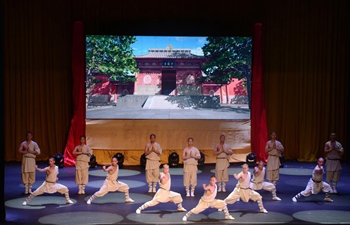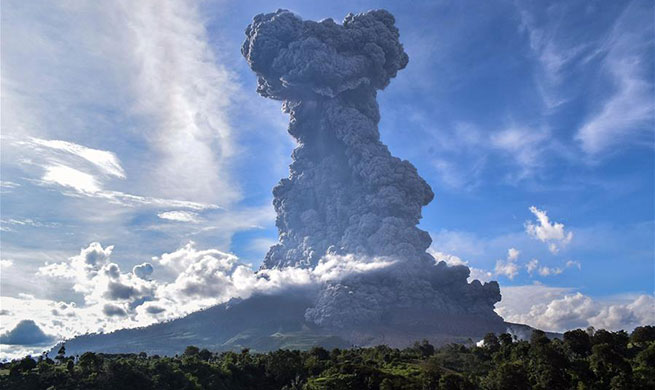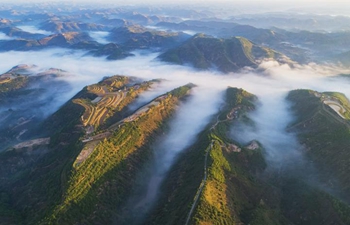WELLINGTON, June 10 (Xinhua) -- More than 130 years after New Zealand's world-famous Pink and White Terraces were buried in a massive volcanic eruption, an international team of scientists will reveal them for all to see, New Zealand's Institute of Geological and Nuclear Science (GNS Science) announced Monday.
An international expedition, led by Cornel de Ronde of GNS Science, will send a manned submersible vehicle 70 metres below the surface of Lake Rotomahana.
There, for the first time, they hope to see the Pink Terrace -- eroded, but still recognizable as the former "Eighth Wonder of the World".
"We have done high-resolution bathymetric and side-scan sonar mapping and sent down a remotely-operated vehicle, and now it's time to see them up close," GNS Science's Cornel de Ronde said.
In the recently screened prime documentary series Beneath New Zealand, Dr de Ronde saw compelling evidence that at least part of the Pink Terraces survived the eruption.
"We saw the familiar terrace shapes emerging from the lake bed and it was a magical experience," Ronde said. "Now we want to film them and investigate further, allowing an up-close view from the submersible."
The submersible JAGO belongs to the GEOMAR Helmholtz Centre for Ocean Research in Kiel, Germany, which will partner with GNS Science in trying to decipher what remnants of the terraces may have survived and how vigorous the geothermal system is today.
Auckland research company Boxfish will provide a small remotely-operated vehicle to assist with mapping the terrace remnants while also filming JAGO in action for a proposed documentary to screen in 2020.













